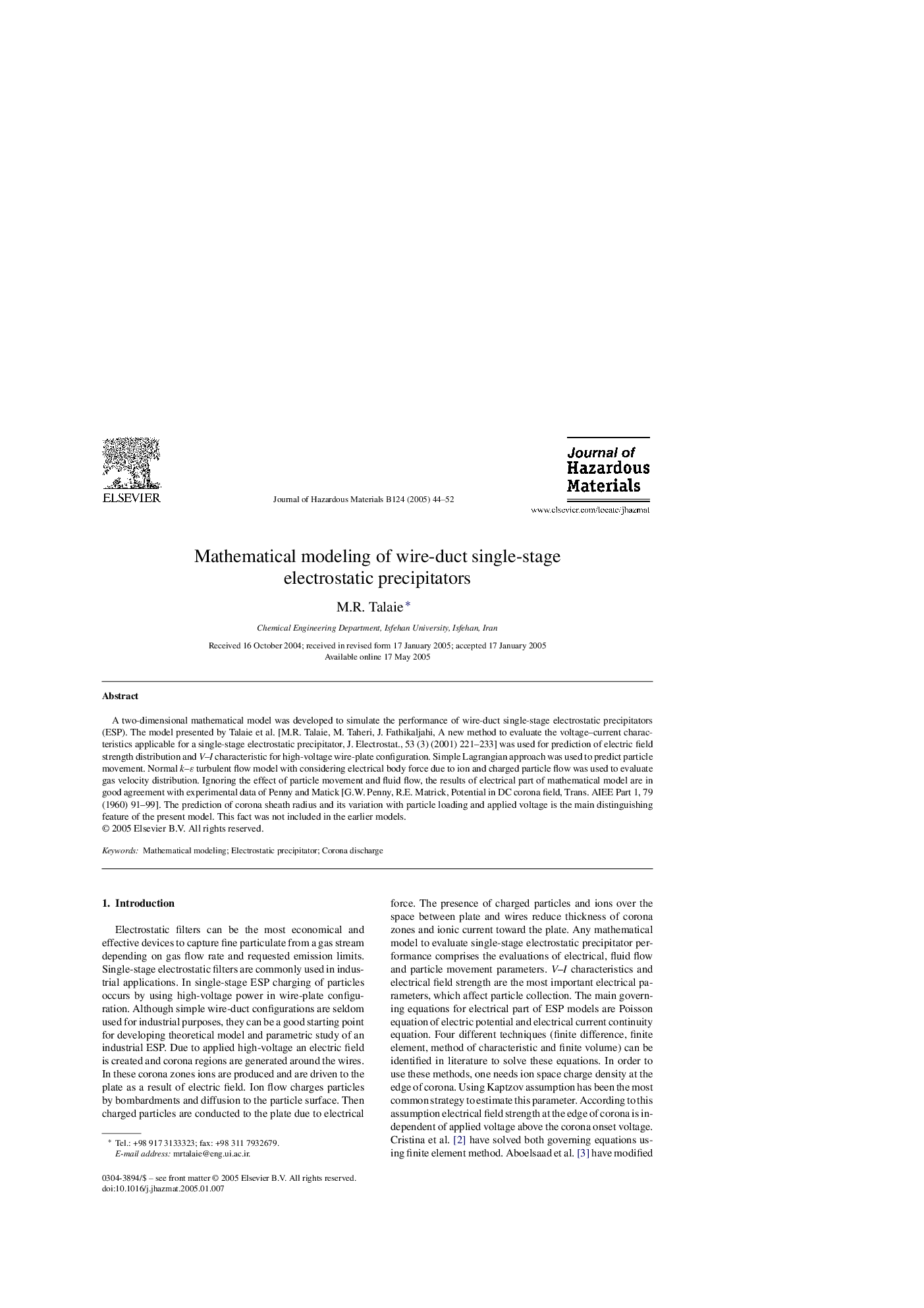| Article ID | Journal | Published Year | Pages | File Type |
|---|---|---|---|---|
| 9674158 | Journal of Hazardous Materials | 2005 | 9 Pages |
Abstract
A two-dimensional mathematical model was developed to simulate the performance of wire-duct single-stage electrostatic precipitators (ESP). The model presented by Talaie et al. [M.R. Talaie, M. Taheri, J. Fathikaljahi, A new method to evaluate the voltage-current characteristics applicable for a single-stage electrostatic precipitator, J. Electrostat., 53 (3) (2001) 221-233] was used for prediction of electric field strength distribution and V-I characteristic for high-voltage wire-plate configuration. Simple Lagrangian approach was used to predict particle movement. Normal k-É turbulent flow model with considering electrical body force due to ion and charged particle flow was used to evaluate gas velocity distribution. Ignoring the effect of particle movement and fluid flow, the results of electrical part of mathematical model are in good agreement with experimental data of Penny and Matick [G.W. Penny, R.E. Matrick, Potential in DC corona field, Trans. AIEE Part 1, 79 (1960) 91-99]. The prediction of corona sheath radius and its variation with particle loading and applied voltage is the main distinguishing feature of the present model. This fact was not included in the earlier models.
Related Topics
Physical Sciences and Engineering
Chemical Engineering
Chemical Health and Safety
Authors
M.R. Talaie,
